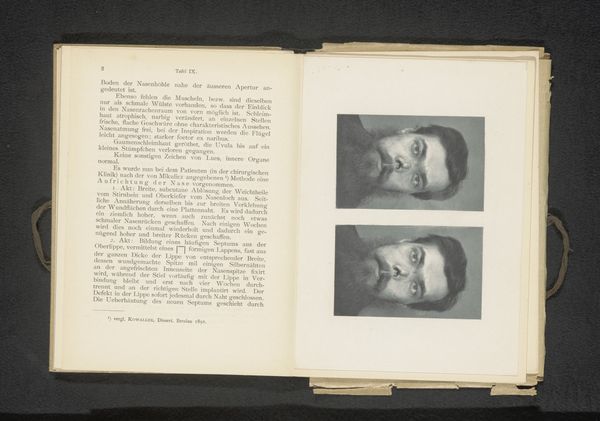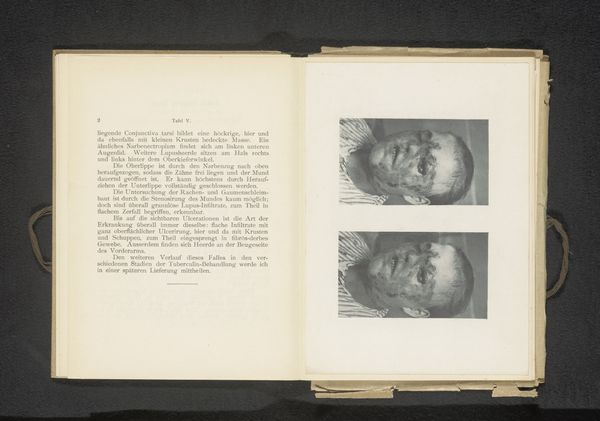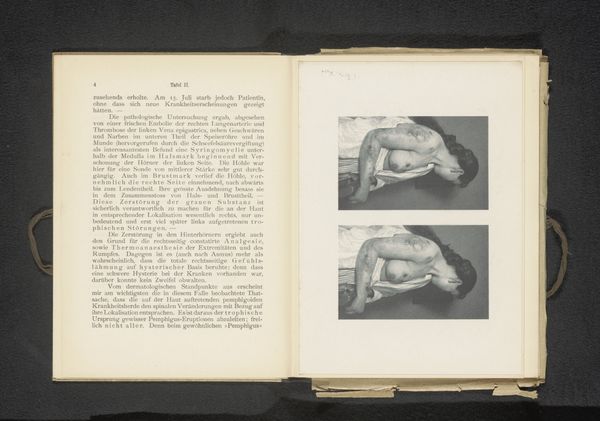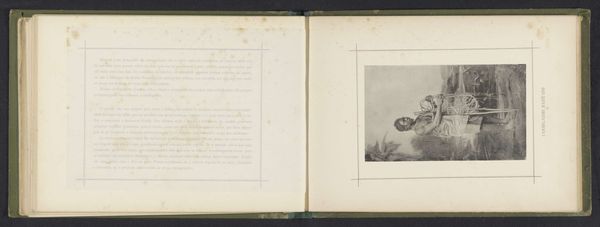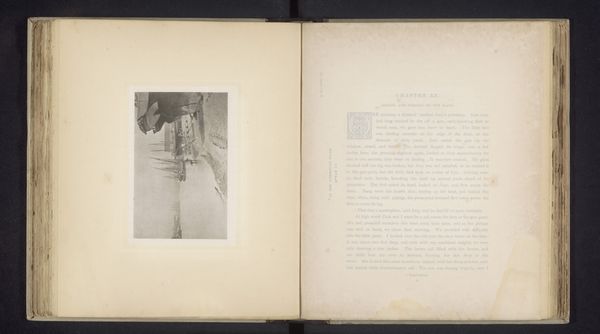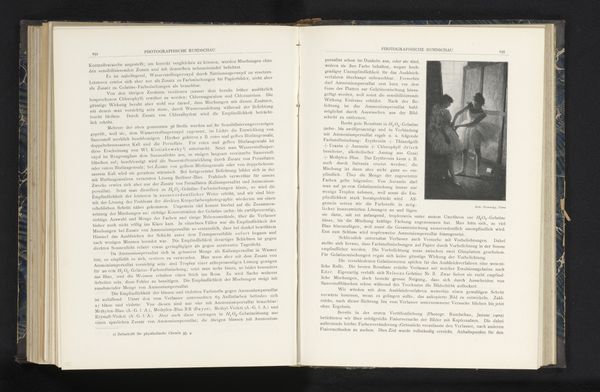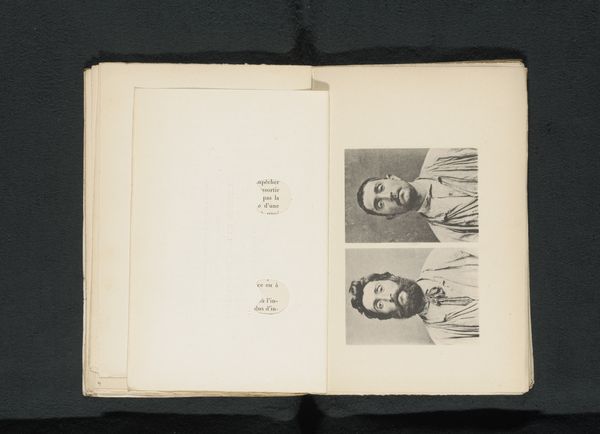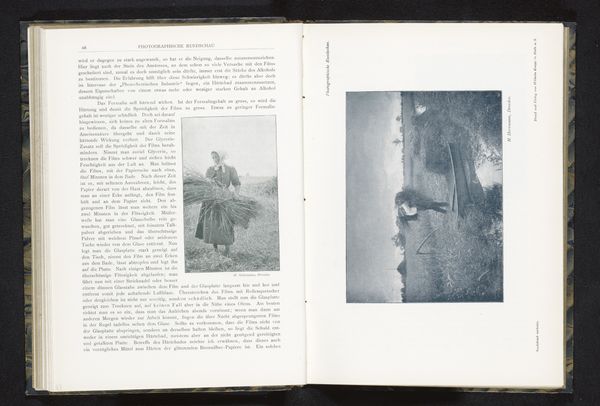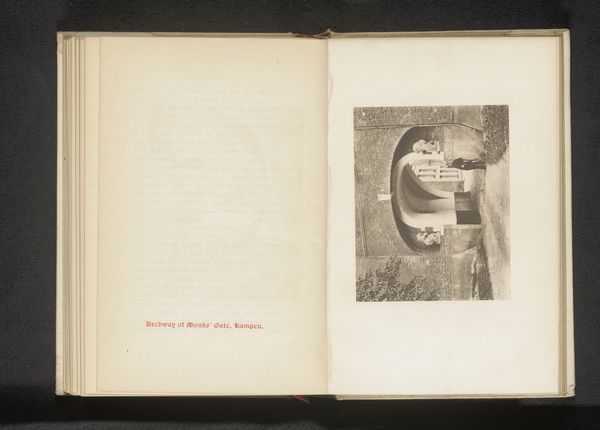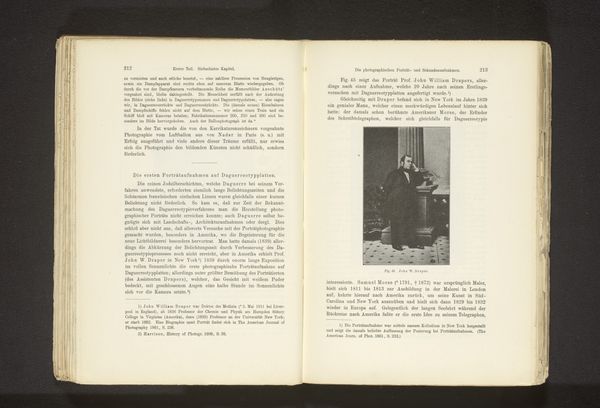
Twee portretten van een patiënt met een carcinoom door huidlupus before 1894
0:00
0:00
print, paper, photography
# print
#
paper
#
photography
#
historical font
Dimensions: height 126 mm, width 175 mm
Copyright: Rijks Museum: Open Domain
Here are two portraits of a patient, part of a medical study by Albert Ludwig Sigesmund Neisser, documenting a skin lupus condition. Consider the nose, its symbolic importance through history. In ancient cultures, the nose was a vital organ, not just for breathing but also for perceiving the world and understanding one's place within it. Now, look at the afflicted nose here. Its disfigurement transcends mere physical damage; it represents a deeper disruption. The nose, once a proud marker of identity, is now a site of decay, echoing themes of mortality and the transient nature of the human form. This recalls images of defaced statues from antiquity, where damage to the nose was a symbolic act of desecration, an attempt to erase identity and power. Just as those ancient acts carried profound psychological weight, so too does this medical image, reminding us of our fragility. This image is not just a medical document; it is a stark reminder of the psychological impact of physical decay. It highlights how symbols, deeply embedded in our subconscious, can evoke powerful emotional responses across time.
Comments
No comments
Be the first to comment and join the conversation on the ultimate creative platform.
